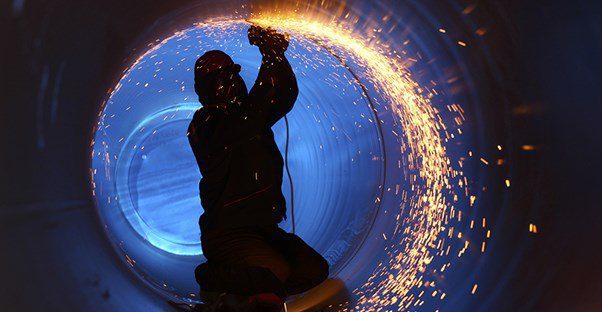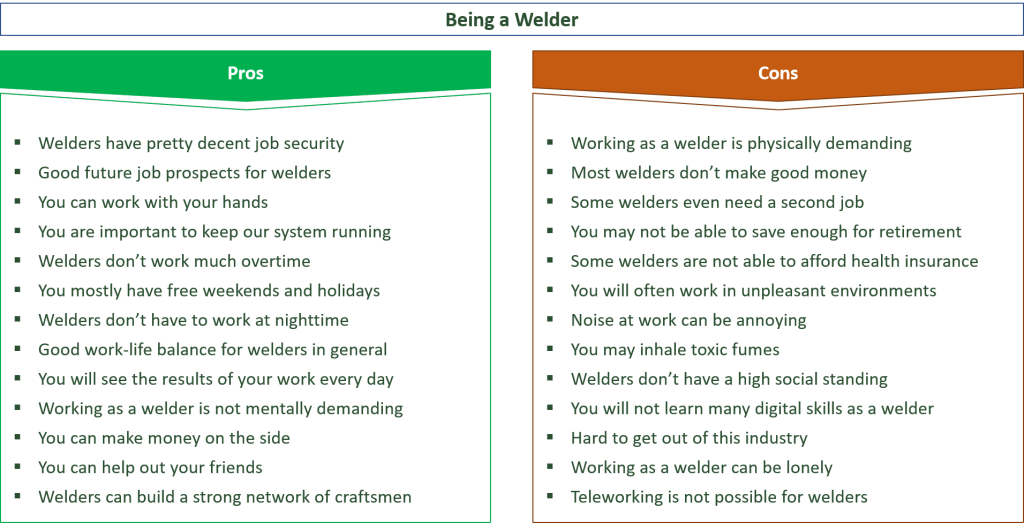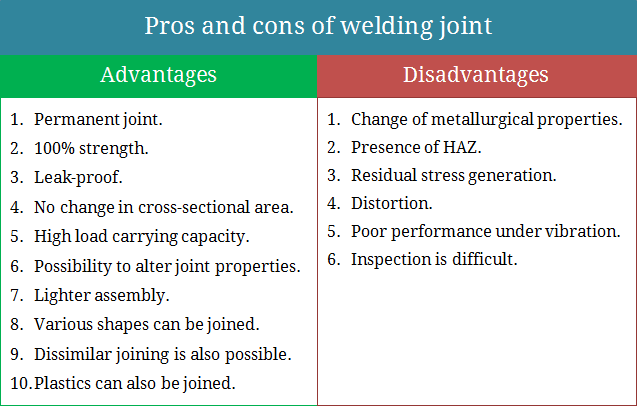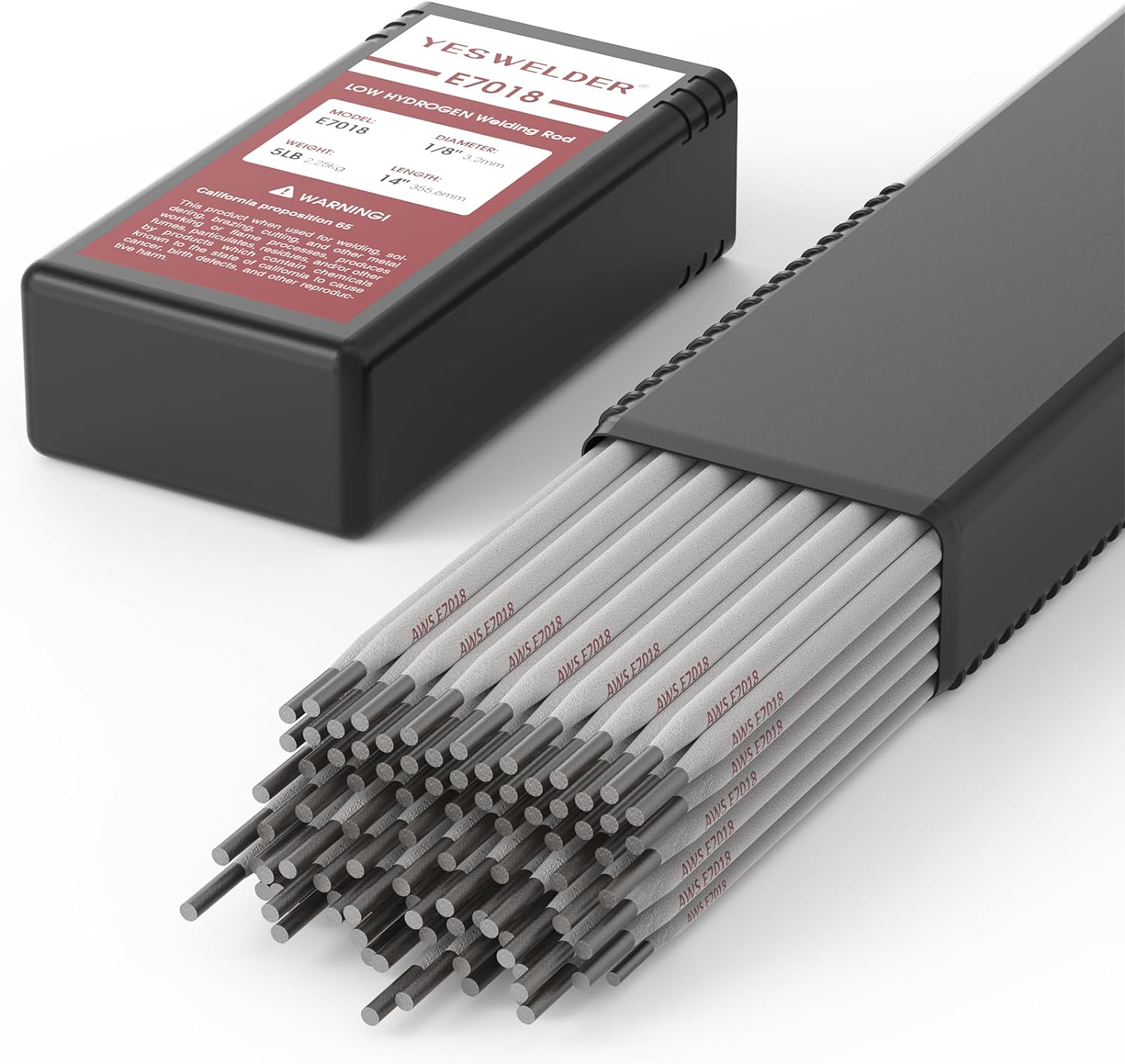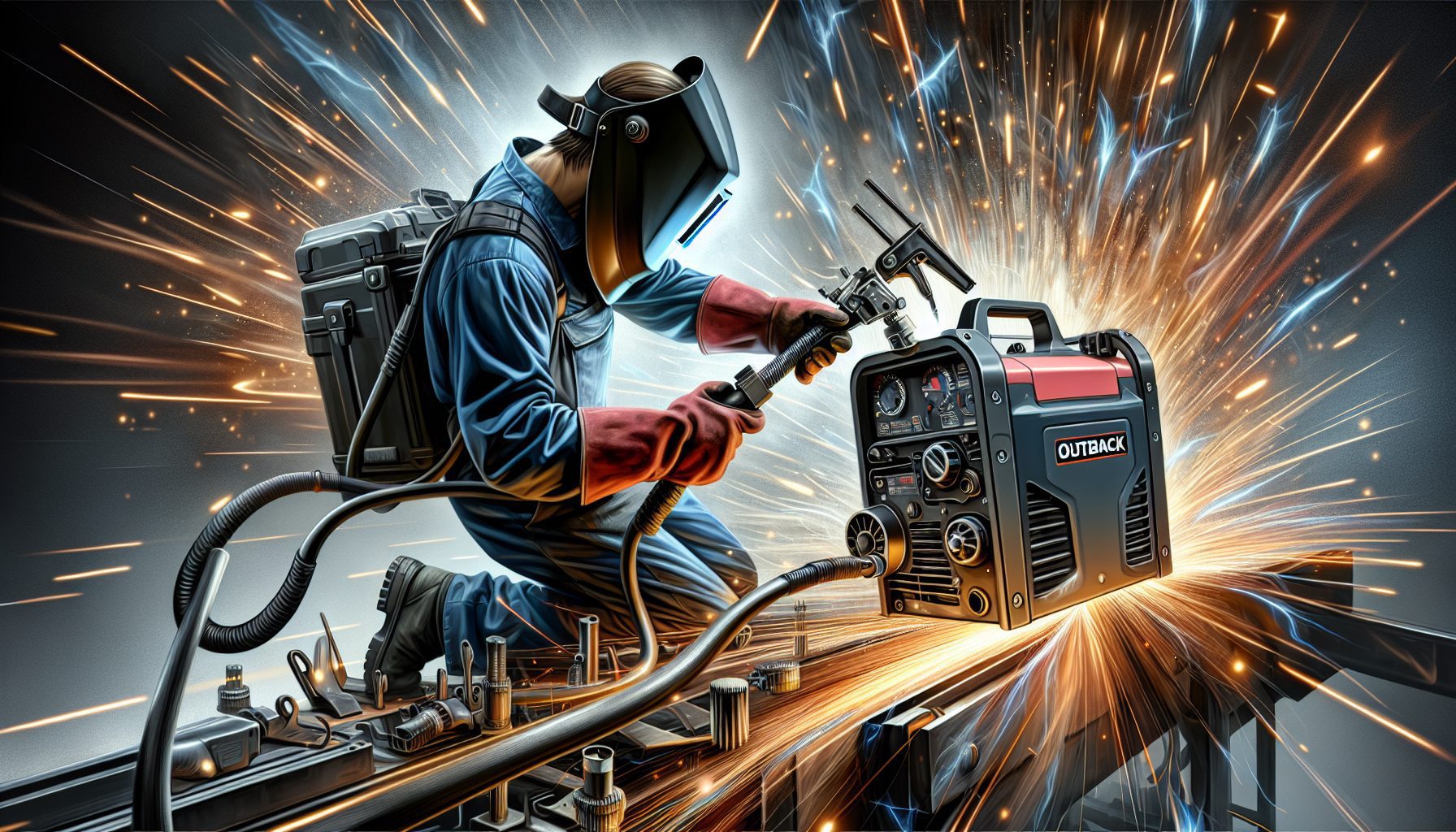Being a welder can be an exciting career path filled with opportunities to create and build. However, it’s important to be aware of the potential downsides that come with the job. From the physical demands on your body to the potential risks of exposure to hazardous materials, there are several negatives to consider. In this article, we will explore these challenges, providing you with a comprehensive understanding of the potential drawbacks of being a welder. So, grab a cup of coffee and join us as we uncover the less glamorous side of this profession.
Physical Hazards
Exposure to toxic fumes and gases
Being a welder comes with its fair share of physical hazards. One of the major concerns is the exposure to toxic fumes and gases. When performing welding tasks, you are often working with metals that release hazardous fumes and gases when heated. These fumes can be extremely harmful if inhaled, leading to respiratory issues and long-term health problems. It is vital to work in well-ventilated areas and wear appropriate protective equipment to minimize exposure.
Risk of burns and electric shocks
Another physical hazard that welders face is the risk of burns and electric shocks. Welding involves working with high temperatures and intense heat sources, putting you at risk of getting burned. Additionally, you are constantly dealing with live electrical currents, increasing the chances of electric shocks. It is crucial to follow proper safety procedures and wear protective clothing to mitigate these risks.
Potential eye and respiratory problems
Being a welder also poses the risk of eye and respiratory problems. The intense light emitted during the welding process can cause eye damage if not adequately protected. Welding without proper eye protection can lead to conditions such as arc eye or welder’s flash, which are extremely painful and can impair vision. Furthermore, the exposure to hazardous fumes and particles can lead to respiratory problems, emphasizing the importance of using appropriate respiratory protection.
Workplace Challenges
Difficult working conditions
Welding often involves working in challenging environments. Whether it’s confined spaces, high altitudes, or extreme temperatures, welders are expected to perform their job under various difficult conditions. These conditions can be physically demanding and require a considerable amount of endurance and adaptability.
Outdoor work challenges
Many welding jobs require working outdoors, which presents its own set of challenges. Extreme weather conditions, such as scorching heat or freezing cold, can make the work environment uncomfortable and hazardous. Welders must be prepared to face these challenges and take necessary precautions to protect their health and safety.
Limited job opportunities in certain locations
Another workplace challenge that welders often face is the limited job opportunities in certain locations. While welding is a skill that is in demand, the availability of jobs may vary depending on the region or industry. This can sometimes lead to difficulties in finding steady employment, especially if you are not willing or able to relocate. It is important to carefully consider the job market and potential career opportunities before pursuing a career in welding.
Health Risks
Musculoskeletal issues
Welding is a physically demanding job that requires repetitive movements and prolonged periods of standing or crouching. As a result, welders are at risk of developing musculoskeletal issues, such as back pain, shoulder strains, and joint problems. It is crucial to maintain good posture, take regular breaks, and engage in exercises that promote flexibility and strength to prevent these health issues.
Noise-induced hearing loss
The loud noise generated during welding operations can contribute to noise-induced hearing loss. Prolonged exposure to high noise levels without proper hearing protection can lead to permanent hearing damage. It is essential for welders to wear appropriate ear protection, such as earmuffs or earplugs, to preserve their hearing health.
Radiation exposure
Welding involves the use of intense heat sources, which can emit harmful radiation, such as ultraviolet (UV) and infrared (IR) rays. Continuous exposure to these rays can result in serious health problems, including skin burns, eye damage, and an increased risk of developing certain types of cancer. Proper use of personal protective equipment, including welding helmets and protective clothing, is vital to minimize the risk of radiation exposure.
Career Limitations
Limited career progression
While welding offers stable employment and decent wages, one potential limitation is the limited career progression opportunities. Advancement in the welding field typically requires acquiring additional certifications, specialized training, or transitioning into supervisory roles. It is essential to continuously seek opportunities for professional development to expand your skills and increase your chances for career growth.
Lack of job security
Job security can sometimes be a concern for welders, especially during economic downturns where construction and manufacturing industries may experience a decline. Ups and downs in the market can impact the availability of welding jobs, leading to temporary or even long-term unemployment. Maintaining a diverse skill set and staying updated on industry trends can help mitigate the risk of job insecurity.
Dependency on certain industries
Welding is closely tied to specific industries such as construction, manufacturing, and oil and gas. This can create a dependency on these industries, and any fluctuations or downturns in these sectors can directly impact job availability for welders. It is important to consider the stability and diversity of the industries you plan to work in when pursuing a welding career.
Mental and Emotional Strain
High stress levels
Working as a welder can often be stressful due to the nature of the job. The pressure to meet deadlines, work with precision, and ensure quality results can increase stress levels. Additionally, there may be instances where mistakes or accidents can have serious consequences, adding to the mental strain. Implementing stress management techniques, such as mindfulness or relaxation exercises, can help cope with the demands of the job.
Isolation and loneliness
Welding is often a solitary profession, requiring focused attention and concentration on the task at hand. This can lead to feelings of isolation and loneliness, especially for those who prefer more social interactions. Maintaining a supportive network of colleagues or pursuing hobbies outside of work can alleviate the sense of isolation and foster a healthy work-life balance.
Emotional toll of working in dangerous environments
Working in dangerous environments and witnessing potential accidents or injuries can take an emotional toll on welders. The constant awareness of the risks involved and the responsibility to ensure safety for themselves and their colleagues can be emotionally challenging. It is important to prioritize mental well-being and seek support from loved ones or professional resources when needed.
Financial Considerations
Variable income
Welding jobs may offer a variable income, depending on factors such as the type of work, location, and experience level. Contract-based or project-based welding can lead to fluctuations in income, making financial planning more challenging. It is crucial to budget and save during times of higher income to prepare for leaner periods.
Unpredictable work hours
Welders may have to adapt to fluctuating work schedules and long hours. Depending on the projects or jobs at hand, welding work can require early morning starts, late-night shifts, or extended periods away from home. The irregular work hours can be disruptive to personal life and may require careful planning and coordination with commitments outside of work.
Expensive equipment and certifications
The initial investment in welding equipment and certifications can be significant. High-quality welding machines, protective gear, and tools can be expensive, especially for those starting their careers. Additionally, acquiring and maintaining relevant certifications can incur costs. It is important to consider these financial obligations when entering the field and to budget for ongoing equipment upgrades and certification renewals.
Lack of Recognition
Underappreciation for skilled work
Despite the technical skills and expertise required in welding, there is sometimes a lack of recognition for the profession. The general public may not fully appreciate the level of expertise and craftsmanship involved in welding. This lack of recognition can lead to feelings of being undervalued, which can impact job satisfaction. Seeking out professional networks and engaging in activities that promote recognition within the industry can help counteract this sentiment.
Perception as a low-status job
Welding is often perceived as a low-status job by society, which can be disheartening for those in the profession. The misconception that manual labor is inferior to other occupations can create a negative stigma. However, it is essential to remember the importance of welding in various industries and the valuable skills that welders possess.
Lack of public awareness about the importance of welding
Public awareness about the significance of welding in everyday life is often limited. Many people are unaware of the role welding plays in constructing buildings, bridges, automobiles, and numerous other essential structures and objects. Educating and raising awareness about the importance of welding can help combat the lack of public recognition and appreciation for the profession.
Lifestyle Impact
Physical strain on the body
The physical demands of welding, such as prolonged standing, repetitive movements, and heavy lifting, can take a toll on the body. Welders may experience fatigue, muscle soreness, and increased risk of injuries. Regular exercise, stretching, and adopting ergonomic practices can help minimize the physical strain and promote overall well-being.
Restricted social life and personal commitments
The irregular work hours and demanding schedules of welding jobs can often lead to a restricted social life and limited time for personal commitments. Prioritizing self-care and maintaining open communication with loved ones about the challenges of the profession can help strike a balance between work and personal life.
Limited time off and vacation opportunities
Welding jobs may not always provide ample time off or vacation opportunities due to the nature of the work. Some projects may require continuous work for extended periods, making it difficult to take time off for leisure activities or vacations. Proper time management and prioritization of rest and relaxation are crucial to maintain a healthy work-life balance.
Job Demands
Physical stamina and endurance
Welding is physically demanding and requires significant stamina and endurance. The job often involves standing or crouching for long periods, maneuvering heavy materials, and performing repetitive movements. Regular exercise, maintaining a healthy lifestyle, and staying physically fit are essential to meet the physical demands of the job.
Continuous skill development
To thrive as a welder, continuous skill development is vital. Technology and industry standards are constantly evolving, making it necessary to stay updated on the latest welding techniques and advancements. Pursuing professional development opportunities, attending workshops, and seeking mentorship from experienced welders can help expand your skill set and improve your career prospects.
Ability to work in various environments
Welders must be adaptable to working in diverse environments. Whether it’s indoors, outdoors, or in confined spaces, the ability to navigate different work settings is crucial. Each environment brings its own set of challenges and requires specific safety precautions and protocols. Being flexible and open to new experiences is key for success in the welding field.
Safety Concerns
Risk of metal fume fever
Welding stainless steel, galvanized metal, or other materials that release certain metal fumes can put welders at risk of developing metal fume fever. This flu-like illness is caused by inhaling these fumes and can result in symptoms such as fever, chills, fatigue, and respiratory distress. Adhering to proper ventilation measures and wearing appropriate respiratory protection are essential to minimize the risk of metal fume fever.
Potential exposure to asbestos
Certain welding activities, such as repairing or removing old structures, may involve the risk of exposure to asbestos. Asbestos-containing materials can release harmful fibers when disturbed, leading to serious health conditions such as lung cancer and mesothelioma. It is crucial to follow specific guidelines and safety measures when working with asbestos-containing materials to prevent exposure.
Accidents from handling heavy machinery
Working with heavy machinery and equipment is an inherent part of the welding profession. Improper handling or lack of attention to safety protocols can lead to accidents and severe injuries. It is vital for welders to receive appropriate training, use machinery correctly, and prioritize safety at all times to minimize the risk of accidents.
In conclusion, while there are numerous negatives associated with being a welder, it is crucial to approach these challenges with a proactive mindset and prioritize safety and well-being. By staying aware of the physical hazards, workplace challenges, health risks, career limitations, mental and emotional strain, financial considerations, lack of recognition, lifestyle impact, job demands, and safety concerns, welders can navigate the profession successfully. By taking necessary precautions, seeking continuous skill development, and maintaining a healthy work-life balance, welders can embrace the positives of their chosen field and pursue fulfilling careers.




